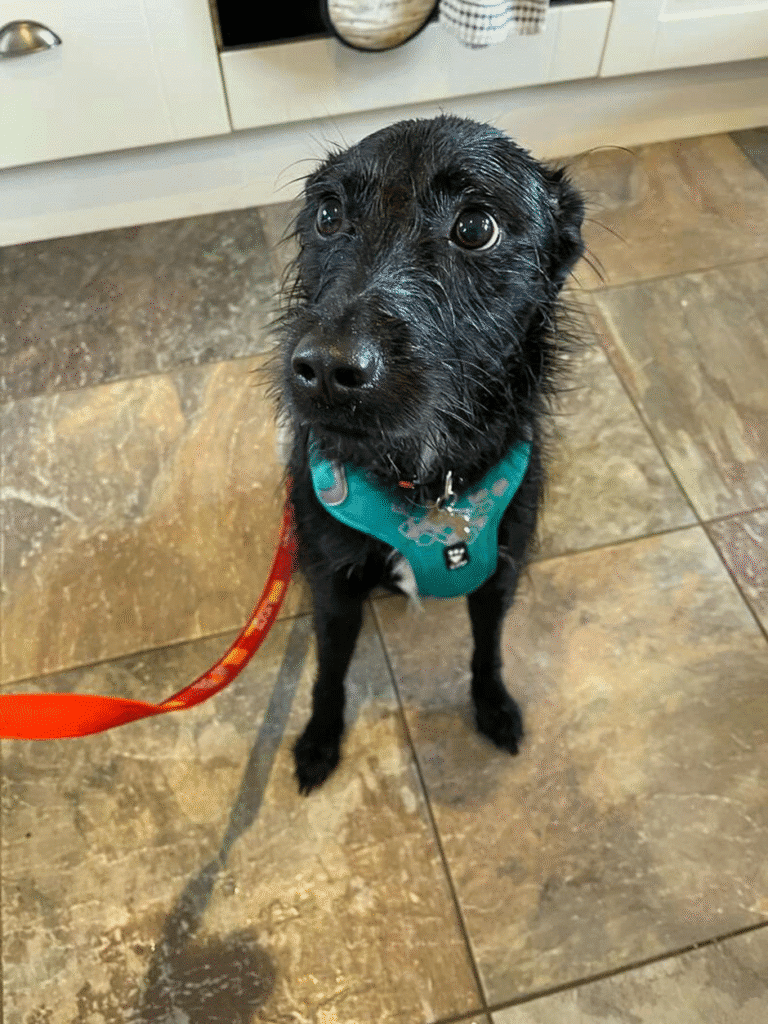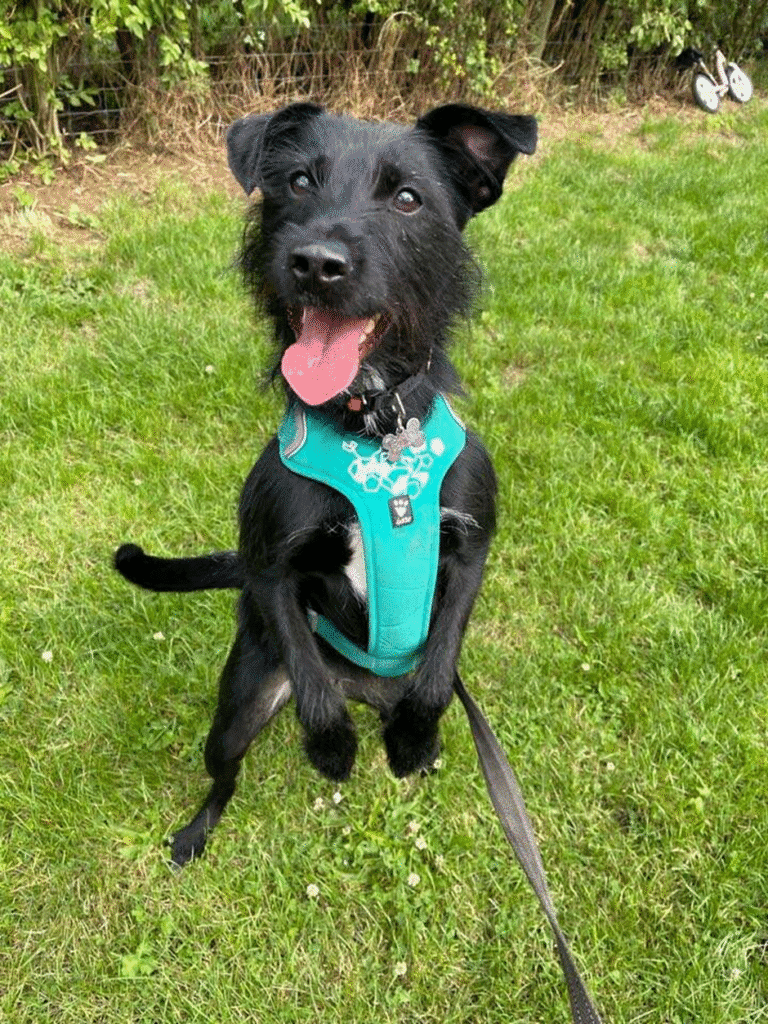The silence in the small exam room at the Willow Creek Veterinary Clinic was the most deafening thing Dr. Jenna Reyes had heard all week. It wasn’t the silence of a deep sleep or peaceful recovery; it was the heavy, confused quiet of a dog who had just been discarded.
His name was Ranger, a gorgeous German Shepherd mix whose intelligence shone in his rich brown eyes. He was young, barely two years old, powerfully built, and in perfect health. Yet, the chart on the counter, where his previous owners had signed him over, contained a request that made Jenna’s blood run cold: “Owner requested euthanasia due to excessive barking.”
metal cabinet, wathing Ranger. He was an easy dog—he hadn’t growled, hadn’t snapped, and hadn’t made a single sound since his people walked away. He just stood by the door, his tail barely twitching, fixated on the space where they had been. It was the posture of a loyal heart that couldn’t comprehend betrayal.

Jenna had tried to reason with the couple. She’d explained that a dog like Ranger, clearly a blend of working breeds, needed stimulation. His barking wasn’t malice; it was communication. It was boredom, frustration, and the desperate need for a job. But they had been impatient, viewing him as a faulty machine to be disposed of, not a sentient being with needs.
“We can’t have him around anymore,” the man had insisted, cold and final. They had paid the required fee and vanished, leaving Ranger with nothing but the sterile scents of the clinic and the sudden, vast emptiness of his future.
“It’s inhumane, Marcus,” Jenna finally whispered to her head technician. “We can’t do it. We won’t.”
Marcus, a big man with an even bigger heart, was already stroking Ranger’s powerful flank. Ranger leaned into the pressure, his eyes closing in a brief moment of pure relief. .
“I agree,” Marcus said firmly. “He’s coming off the schedule. We’ll hold him as an owner-surrender rescue. Let’s get him to the back office. He needs quiet, not a death sentence for being a dog.”

Ranger was moved to a recovery kennel in the back, a quiet room far from the main clinic bustle. Here, the extent of his confusion was palpable. He didn’t pace; he didn’t whine. He curled up on the new orthopedic bed they gave him, making himself small. The vibrant energy that marked him as a young dog was completely suppressed, replaced by a deep, heartbreaking melancholy.
“He’s terrified to make noise,” Jenna noted later, reviewing his vitals. “He learned that his voice equals pain and abandonment.”
They gave him a new name tag that simply read “Rescue Hold.” Then, Jenna got to work. She couldn’t risk placing him in a standard municipal shelter where the sheer noise and chaos might overwhelm him and trigger the very behavior he was condemned for. She reached out to her network of specialist groups—those who understood the intense needs of working breeds.
She quickly snapped several photos, catching the strength of his build and, most importantly, the raw emotion in his face. She crafted a plea that cut straight to the heart of the matter: This dog was betrayed. He is healthy, friendly, and desperate for structure. His crime? He barked. We need a foster who understands that a bark is just a dog asking a question.
The response was immediate. Within an hour, Sarah, the coordinator for “Second Chances Shepherds,” arrived. Sarah didn’t bring toys; she brought calm. She approached Ranger not with pity, but with respect.

She sat quietly by the kennel, reading a book, allowing Ranger to observe her. Finally, curiosity outweighed caution. Ranger tentatively approached the kennel door and nudged her hand through the wire.
“Hello, handsome,” Sarah murmured, her voice warm and low. “Your life starts now.”
The moment Sarah clipped a sturdy, brightly colored leash onto Ranger’s collar, the mood shifted. It was an act of finality—the final removal from the clinic, the final severance from his past.
Sarah led him out to her car and then, crucially, straight to a secure, fenced yard at her foster home. She let him go.
Ranger hesitated for only a second. Then, he took off.
He ran a full perimeter of the fence, his muscles working in a smooth, powerful rhythm. He stretched, he turned, he felt the cool grass beneath his paws. And then, he let it out.
A glorious, full-throated, joyous WOOF!
It wasn’t a desperate, anxious bark; it was a pure expression of canine freedom. He ran, tongue lolling, a massive, silly grin splitting his face. . He was finally free to be himself.
Under Sarah’s guidance, Ranger’s recovery was swift. She taught him structure and confidence. She taught him that his voice was a tool, not a weapon. He learned the difference between an appropriate alert bark and a frustrated yell.

The best part, Sarah always said, was his transformation from a “muted” dog to an expressive one. He became the goofy, affectionate animal he was meant to be, loving car rides and, yes, letting out a satisfied, happy sigh when he finally curled up on the sofa next to Sarah.
His forever family, the Petersons, found him soon after. They were a couple who lived near a quiet park, spent their weekends hiking, and had the deep, unwavering patience necessary to reassure a dog who had been told his natural behavior was a capital offense.
The final photo shared with Jenna was the perfect punctuation mark on the story: Ranger, in a brightly patterned bandana, sitting calmly in his new living room, looking directly at the camera with the proud, confident posture of a dog who finally knows he is home, safe, and loved. .
He wasn’t condemned for barking; he was saved by people who understood that a dog’s voice is the soundtrack of a happy, fulfilled life. And now, in the quiet, supportive home of the Petersons, Ranger was finally playing his own joyous, beautiful tune.


